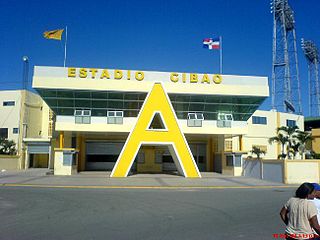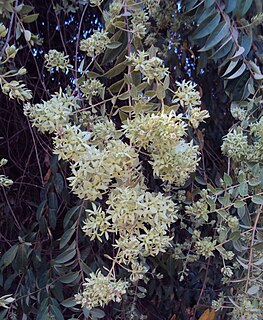
The Dominican Republic is a country located on the island of Hispaniola in the Greater Antilles archipelago of the Caribbean region. It occupies the eastern five-eighths of the island, which it shares with Haiti, making Hispaniola one of only two Caribbean islands, along with Saint Martin, that are shared by two sovereign states. The Dominican Republic is the second-largest nation in the Antilles by area at 48,671 square kilometers (18,792 sq mi), and third-largest by population, with approximately 10.8 million people, of whom approximately 3.3 million live in the metropolitan area of Santo Domingo, the capital city. The official language of the country is Spanish.

The economy of the Dominican Republic is the eighth largest in Latin America, and is the largest in the Caribbean and Central American region. The Dominican Republic is an upper-middle income developing country primarily dependent on mining, agriculture, trade, and services. The country is the site of the single largest gold mine in Latin America, the Pueblo Viejo mine. Although the service sector has recently overtaken agriculture as the leading employer of Dominicans, agriculture remains the most important sector in terms of domestic consumption and is in second place in terms of export earnings. Tourism accounts for more than $1 billion in annual earnings. free-trade zone earnings and tourism are the fastest-growing export sectors. According to a 1999 International Monetary Fund report, remittances from Dominican Americans, are estimated to be about $1.5 billion per year. Most of these funds are used to cover basic household needs such as shelter, food, clothing, health care and education. Secondarily, remittances have financed small businesses and other productive activities.

Dominicans are people of the Dominican Republic. This identification may be historical, cultural, legal, or residential. For most Dominicans, several of these connections exist and are collectively the source of being Dominican.

Myrciaria floribunda, commonly known as cambuizeiro, guavaberry or rumberry, is a species of plant in the family Myrtaceae. It can be found across south and central america in dry or moist coastal woodlands, up to 300 metres above sea level. The guavaberry, which should not be confused with the guava, is a close relative of camu camu.

Monte Plata is an eastern province of the Dominican Republic, and also the name of its capital city. It was split from San Cristóbal in 1992.
The Dominican Republic national football team represents the Dominican Republic in men's international football, and is governed by the Dominican Football Federation. The team are a member of the Caribbean Football Union of CONCACAF, the governing body of football in North and Central America and the Caribbean. The Dominican Republic has never qualified for the FIFA World Cup finals.

Tropical Storm Odette was a rare off-season tropical storm that affected the Caribbean Sea in early December 2003. The fifteenth named storm of the 2003 Atlantic hurricane season, Odette formed near the coast of Panama a few days after the official end of the Atlantic hurricane season, and ultimately made landfall on the Dominican Republic as a moderate tropical storm, before becoming extratropical on December 7, dissipating two days later.

Wisteria floribunda is a species of flowering plant in the family Fabaceae, native to Japan and Korea. Growing to 9 m (30 ft), it is a woody, deciduous twining climber. It was brought from Japan to the United States in the 1830s. Since then, it has become one of the most highly romanticized flowering garden plants. It is also a common subject for bonsai, along with Wisteria sinensis.

Anredera is a genus of plants native to Latin America, the West Indies, Texas, and Florida. Some are naturalized in other regions. Most of them evergreen vines of dry scrubland and thickets. Members of the genus are commonly known as Madeira vines. At least one species, A. cordifolia bears edible roots or tubers and leaves similar to those of Basella alba.

Alchorneopsis is a genus of flowering plants in the family Euphorbiaceae first described as a genus in 1865. It is native to Central America, the Greater Antilles, and northern South America.
- Alchorneopsis floribunda(Benth.) Müll.Arg. - Costa Rica, Honduras, Panama, Puerto Rico, Dominican Republic, 3 Guianas, Colombia, Venezuela, Ecuador, Peru, NW Brazil
- Alchorneopsis portoricensisUrb. - Puerto Rico

Estadio Cibao is a multi-use stadium in Santiago, Dominican Republic. Currently, it is mostly used for baseball games and hosts the home games of the Águilas Cibaeñas in the Dominican Winter Baseball League. The stadium opened on October 25, 1958 and was constructed by the engineer Bienvenido Martinez Brea. Estadio Cibao seats 18,077 spectators, making it the largest in the Dominican Republic. Its field dimensions are 335 feet at the foul poles, 365 feet to the power alleys, and 385 feet at center field.

Calycopteris floribunda, commonly known as ukshi, is a large climbing shrub which is 5–10 m long, with vines that are about 5–10 cm in diameter, the stem and leaves are said to have medicinal properties. Ukshi is found extensively in the low-lying tropical evergreen forests of the Western Ghats, and rarely in Eastern Ghats of coastal Andhra. These are also found in "Kavus" or the Sacred Groves of Kerala. Commonly known as kokkarai in Hindi, Minnarakoti in Tamil, Adivijama, in Telugu. The plant is also grown in central and southern parts of India
Antihaitianismo, also called anti-Haitianism in some English sources, is prejudice or social discrimination against Haitians in the Dominican Republic.
Sports are a central part of the culture of the Dominican Republic, and have been practiced in the whole country since the native inhabitants were living in the island. Sports play a key role in the culture and makeup of Dominican Republic society. Baseball is the most popular sport on the island country and Major League Baseball has been recruiting players from the Dominican Republic since the 1960s. Association football is the second sport of the country.
The Dominican blind snake or Dominican worm snake is a species of blind snake that is endemic to the Caribbean island-nation of Dominica, in the Lesser Antilles.

Adenaria is a monotypic genus of plants in the family Lythraceae containing the single species Adenaria floribunda. Its common names include fruta de pavo. It is native to Mexico, the Dominican Republic, Haiti, and parts of Central and South America.
Akrosida is a genus in the tribe Malveae, of the plant family Malvaceae.
The following lists include the extreme and significant geographic points of the islands of the Caribbean Sea.

Women in the Dominican Republic have equal constitutional rights as men in the economic, political, cultural and social fields, as well as in the family. Their character has been defined by their history, culture, tradition and experience.
A. floribunda may refer to:











